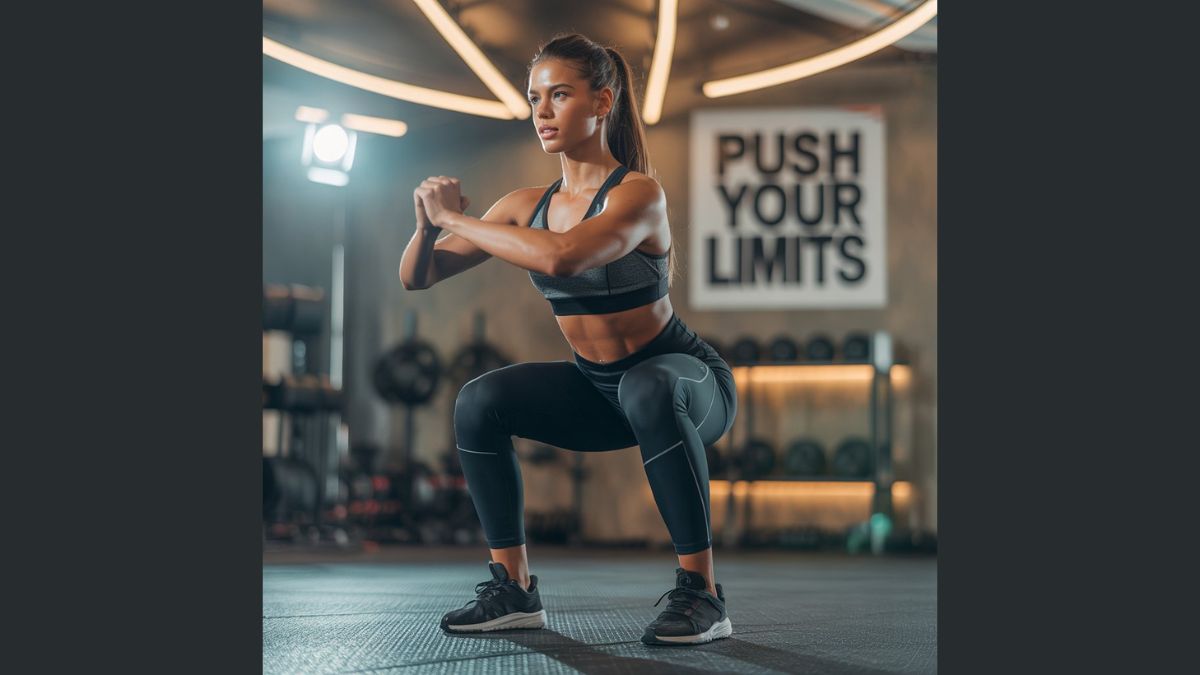Are you looking to amp up your leg day routine? You might have heard of the Bulgarian Split Squat, a staple for building lower body strength. While it’s an excellent exercise, it isn’t the only option out there. Whether you’re just starting or are a seasoned lifter, exploring alternatives can keep your workouts fresh and effective. In this post, we’ll dive into what makes the Bulgarian Split Squat so effective and then unveil some fantastic alternative exercises that will help you sculpt strong legs without monotony creeping in. Get ready to switch things up!
What is a Bulgarian Split Squat?
The Bulgarian Split Squat is a powerful lower body exercise that targets multiple muscle groups. It’s performed by placing one foot behind you on an elevated surface, like a bench or step.
From this position, you lower your hips while keeping the front knee aligned with your ankle. The back leg remains extended, allowing for a deep range of motion. This unique setup engages not just the quadriceps but also the hamstrings and glutes.
It’s often praised for improving stability and balance due to its unilateral nature. By focusing on one leg at a time, it helps correct muscle imbalances and enhances coordination.
Incorporating this move into your routine can elevate your strength training game significantly, making it popular among athletes and fitness enthusiasts alike. Yet, it’s important to master proper form to maximize benefits and minimize risk of injury.
Benefits of Bulgarian Split Squats
Bulgarian split squats offer a multitude of benefits for those looking to enhance their leg strength. One primary advantage is the unilateral nature of the exercise. This means each leg works independently, helping to correct muscle imbalances and improve overall stability.
Another key benefit is increased flexibility in the hip flexors and quadriceps. As you lower your body, these areas stretch, contributing to better range of motion over time.
Moreover, Bulgarian split squats engage not just your legs but also your core. Balancing on one leg requires significant stabilization from your abdominal muscles, which can lead to improved core strength.
Additionally, this exercise can boost athletic performance by mimicking movements used in sports that require single-leg strength and power. It’s an efficient way to build functional fitness that translates into real-world activities or competitive scenarios.
Potential Risks and Considerations
While Bulgarian Split Squats are effective, they come with some risks. Proper form is crucial to avoid strain or injury. Many beginners may struggle with balance or stability during the movement.
Knee pain can also arise if you’re not mindful of your body mechanics. If your knee extends beyond your toes while descending, you might be placing unnecessary stress on that joint.
It’s essential to start with a manageable weight and gradually increase intensity as your strength improves. Listen to your body; any discomfort should prompt an immediate adjustment in technique or a shift to alternative exercises.
People with pre-existing injuries or conditions should consult a fitness professional before adding them to their routine. Taking these precautions can help ensure you reap the benefits without compromising safety.
Alternative Exercises for Leg Strength
When looking for a Bulgarian Split Squat alternative, several exercises can effectively build leg strength.
Lunges are a fantastic choice. They target the quads and hamstrings while improving balance and coordination. You can try forward or reverse lunges to mix things up.
Step-ups are another excellent option. Using a sturdy bench or step, elevate one foot at a time. This movement engages your glutes and thighs while enhancing stability.
Glute bridges should not be overlooked either. Lying on your back with knees bent, lift your hips to engage the posterior chain fully. It’s perfect for strengthening the glutes and lower back.
These alternatives offer variety in training programs without sacrificing effectiveness or results, keeping workouts fresh and engaging as you work towards stronger legs.
Lunges
Lunges are a fantastic exercise for building leg strength. They target your quadriceps, hamstrings, and glutes effectively. Plus, they can easily be modified to suit different fitness levels.
This exercise requires balance and coordination. As you step forward or backward into a lunge, you’re engaging core muscles as well. This added benefit makes lunges great for stability training.
There are various types of lunges to try out—forward, reverse, lateral, or even walking lunges. Each variation offers unique challenges and engages your muscles in slightly different ways.
Incorporating lunges into your workout routine is simple too. You can do them anywhere—with no equipment needed! Whether at the gym or in the comfort of your home, they fit seamlessly into any regimen.
Step-ups
Step-ups are a fantastic alternative to Bulgarian split squats. They engage multiple muscle groups, focusing primarily on your quadriceps, hamstrings, and glutes.
To perform a step-up, find a sturdy bench or platform. Begin by standing in front of it with your feet shoulder-width apart. Step onto the platform with one foot, pushing through your heel as you lift yourself up.
Lower yourself back down slowly to maximize the effectiveness of the exercise. Switch legs after completing your reps for an even workout.
You can vary intensity by adjusting the height of the step or holding weights in each hand. This versatility makes step-ups suitable for all fitness levels.
Incorporating them into your routine not only builds strength but also enhances balance and stability—key components for overall athletic performance.
Glute Bridges
Glute bridges are a fantastic alternative to the Bulgarian split squat, targeting your glutes and hamstrings effectively. This exercise requires minimal equipment, making it accessible for anyone.
To perform a glute bridge, lie on your back with knees bent and feet flat on the floor. Press through your heels as you lift your hips towards the ceiling. Hold at the top for a moment before lowering down.
This movement not only strengthens your posterior chain but also helps improve core stability. You can enhance its intensity by adding weights or trying single-leg variations.
Incorporating glute bridges into your workout routine can lead to better performance in other exercises like squats and deadlifts. Plus, they help promote healthy hip mobility while reducing lower back strain during daily activities.
Conclusion
The Bulgarian Split Squat Alternative is a powerful exercise for targeting leg strength, but it’s not the only option out there. Understanding its benefits helps appreciate why many fitness enthusiasts incorporate it into their routines. However, like any movement, it may carry risks that warrant consideration.
Fortunately, several alternative exercises can provide similar advantages without the potential drawbacks of the Bulgarian Split Squat. Lunges are versatile and easy to modify for various fitness levels. Step-ups offer another fantastic way to engage your legs while promoting balance and coordination. Glute bridges effectively target key muscle groups in your posterior chain.
Exploring these alternatives allows you to diversify your workouts while still focusing on building leg strength. Take time to find which exercises work best for you and align with your fitness goals as you develop a balanced routine tailored to your needs. Embracing variety can keep things fresh and exciting on your journey toward stronger legs!











